A Designer's Guide to the 7 Core Categories of CMF Materials
Pick up your smartphone. Feel the cool, dense precision of its aluminum frame against the smooth, seamless glass of the screen. Now, imagine that same phone was made of warm, textured bamboo or a lightweight, soft-touch recycled plastic.
The object's function hasn't changed, but its entire story—its perceived value, its personality, its very soul—has been completely rewritten.
This is the power of materials.
In the world of CMF (Color, Material, Finish) Design, materials are our vocabulary. A great designer is fluent in this language. They don't just choose a material; they choose a word to tell a specific part of a product's story.
This guide is your Rosetta Stone. We're going to move beyond simple scientific classifications and explore the seven core categories of materials from a designer's perspective, focusing on the story they tell and how to use them to create unforgettable product experiences.
The 7 Categories of CMF Materials Every Designer Should Master
This isn't just a list; it's a sensory tour. Each category is a family of materials with its own unique personality, strengths, and narrative potential.
1. Metals: Strength, Precision, and Permanence
Metals feel important. They have a density and thermal conductivity that communicates durability and quality. From the high-tech feel of titanium to the classic warmth of brass, they are the go-to choice for products that need to feel solid, precise, and built to last.
 Key Examples: Aluminum (lightweight, modern), Stainless Steel (strong, hygienic), Titanium (ultra-strong, premium), Copper & Brass (warm, traditional with a beautiful patina).
Key Examples: Aluminum (lightweight, modern), Stainless Steel (strong, hygienic), Titanium (ultra-strong, premium), Copper & Brass (warm, traditional with a beautiful patina). A Designer's Insight: The finish is everything here. A mirror-polished chrome tells a story of luxury and glamour. A sand-blasted, anodized aluminum tells a story of minimalist, high-tech precision.
A Designer's Insight: The finish is everything here. A mirror-polished chrome tells a story of luxury and glamour. A sand-blasted, anodized aluminum tells a story of minimalist, high-tech precision.
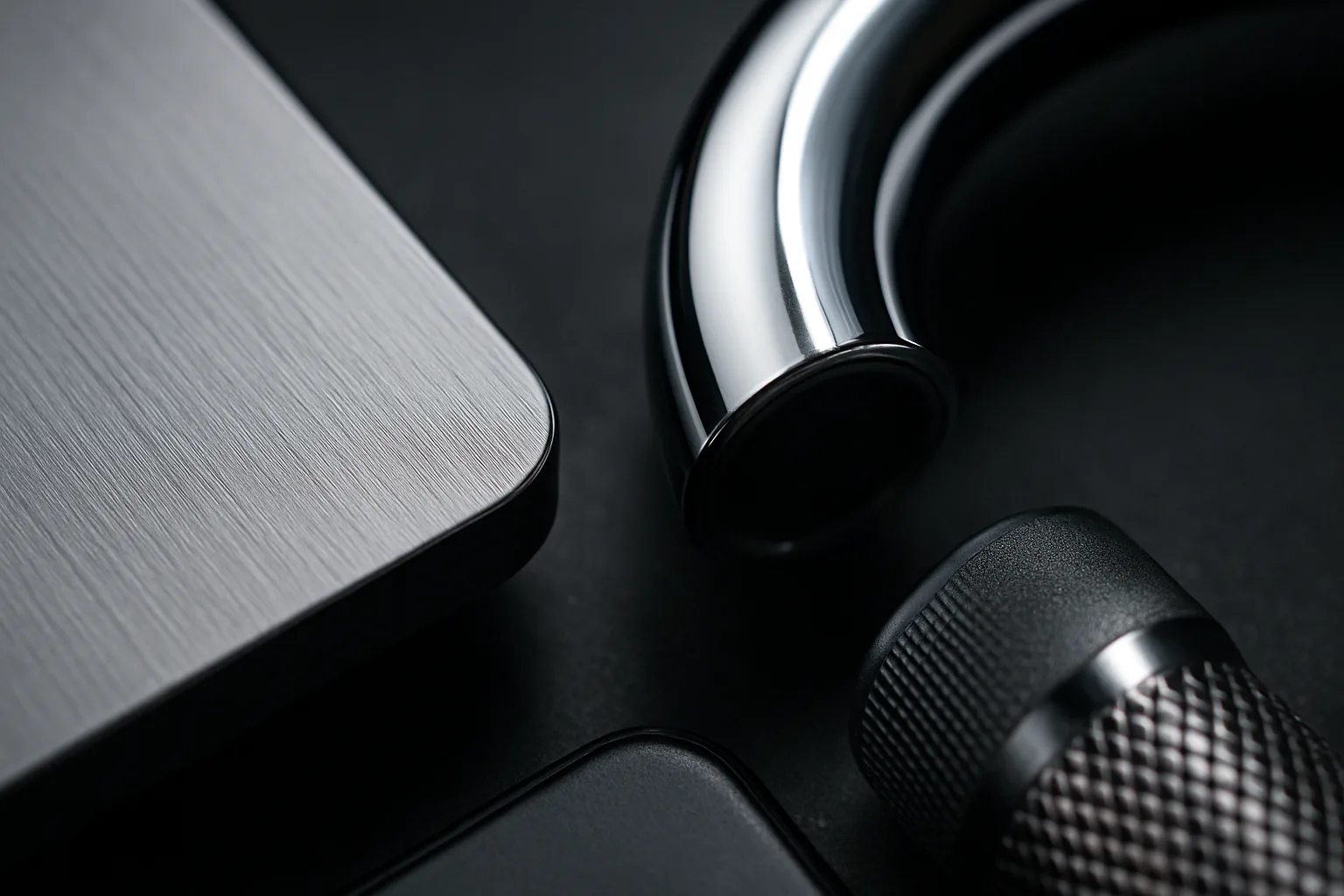 Metal Material
Metal Material
2. Plastics & Polymers: The Modern Chameleon
Plastics are the most versatile and misunderstood category in the designer's toolkit. They can be almost anything: hard and glossy, soft and tactile, crystal clear, or infused with vibrant color. They are the chameleons of the material world.
 Key Examples: ABS (rigid and tough, like LEGO bricks), Polycarbonate (transparent and impact-resistant, like eyewear lenses), Silicone (soft, flexible, and biocompatible), Recycled Composites (rich with a unique story of sustainability).
Key Examples: ABS (rigid and tough, like LEGO bricks), Polycarbonate (transparent and impact-resistant, like eyewear lenses), Silicone (soft, flexible, and biocompatible), Recycled Composites (rich with a unique story of sustainability). A Designer's Insight: The most exciting innovations are in sustainable polymers. Using a a-symmetric recycled ocean plastic isn't just an engineering choice; it's a powerful brand statement. The subtle flecks and imperfections in these materials become a beautiful part of the product's story.
A Designer's Insight: The most exciting innovations are in sustainable polymers. Using a a-symmetric recycled ocean plastic isn't just an engineering choice; it's a powerful brand statement. The subtle flecks and imperfections in these materials become a beautiful part of the product's story.
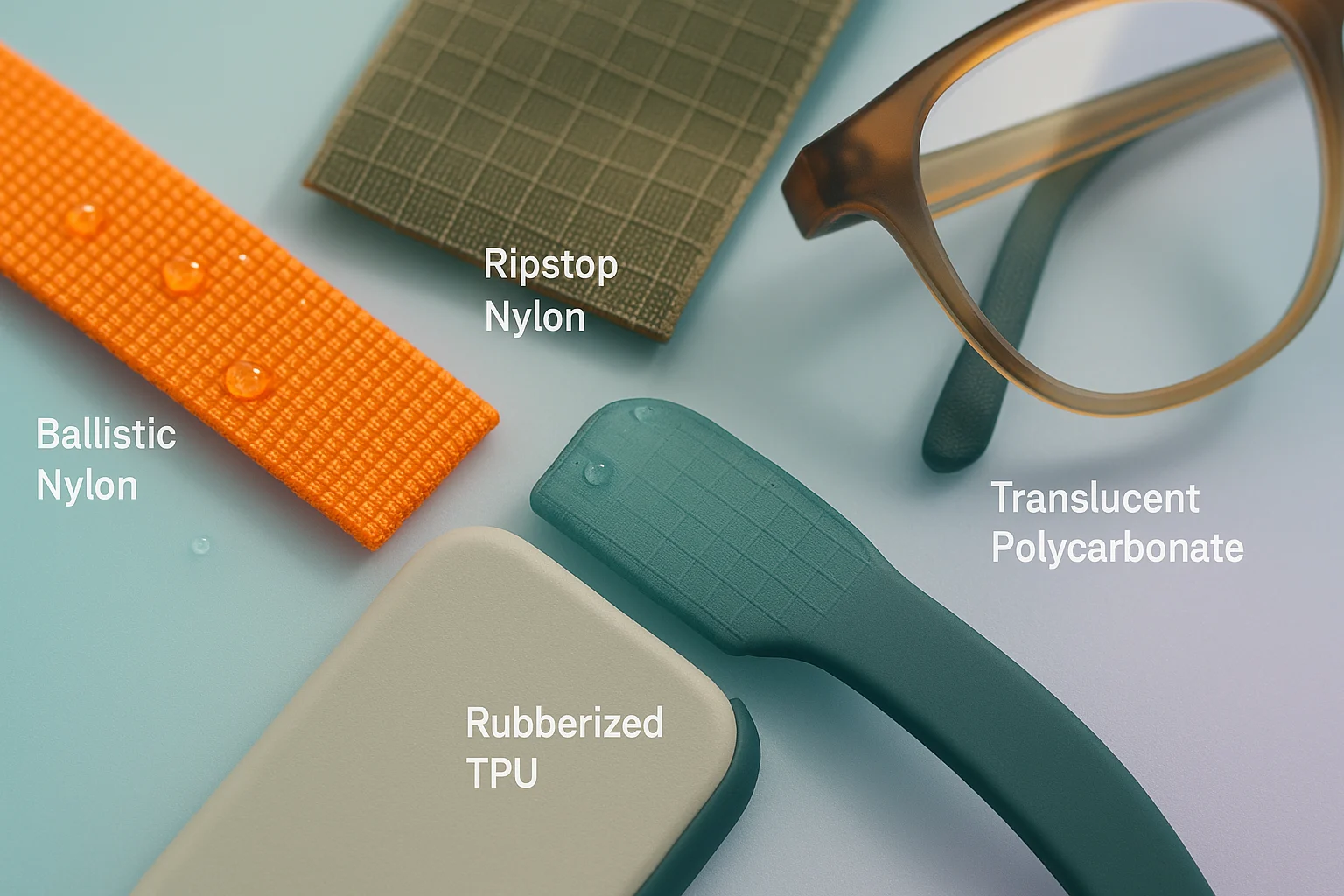 plastic meterial
plastic meterial
3. Woods & Wood Composites: Nature, Warmth, and Craft
Wood connects us to the natural world. It brings a sense of warmth, craftsmanship, and timelessness that synthetic materials struggle to replicate. Each piece has a unique grain, a fingerprint from nature itself.
 Key Examples: Hardwoods (Oak for strength, Walnut for luxury), Softwoods (Pine for a rustic feel), and Engineered Woods (Plywood for its honest, layered look).
Key Examples: Hardwoods (Oak for strength, Walnut for luxury), Softwoods (Pine for a rustic feel), and Engineered Woods (Plywood for its honest, layered look). A Designer's Insight: The grain pattern is, in itself, a form of decoration. Your job as a designer is often to choose a form that celebrates, rather than fights with, the wood's natural beauty.
A Designer's Insight: The grain pattern is, in itself, a form of decoration. Your job as a designer is often to choose a form that celebrates, rather than fights with, the wood's natural beauty.
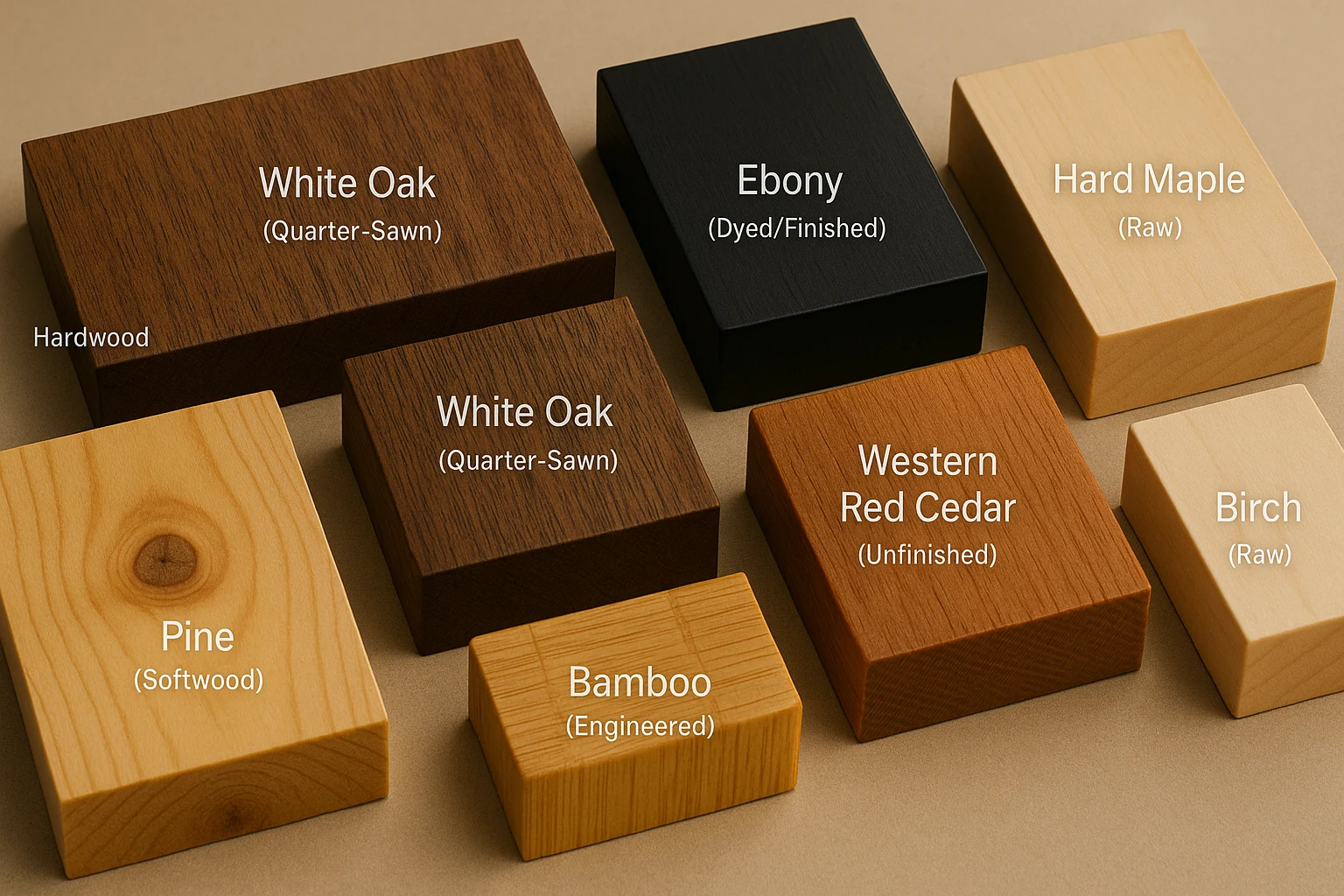 Wood Meterial
Wood Meterial
4. Glass & Ceramics: Purity, Delicacy, and Honesty
Glass and ceramics are materials of pure chemistry and intense heat. They can feel delicate and precious, like porcelain, or incredibly tough and technical, like the Gorilla Glass on our phones. They are defined by the way they play with light.
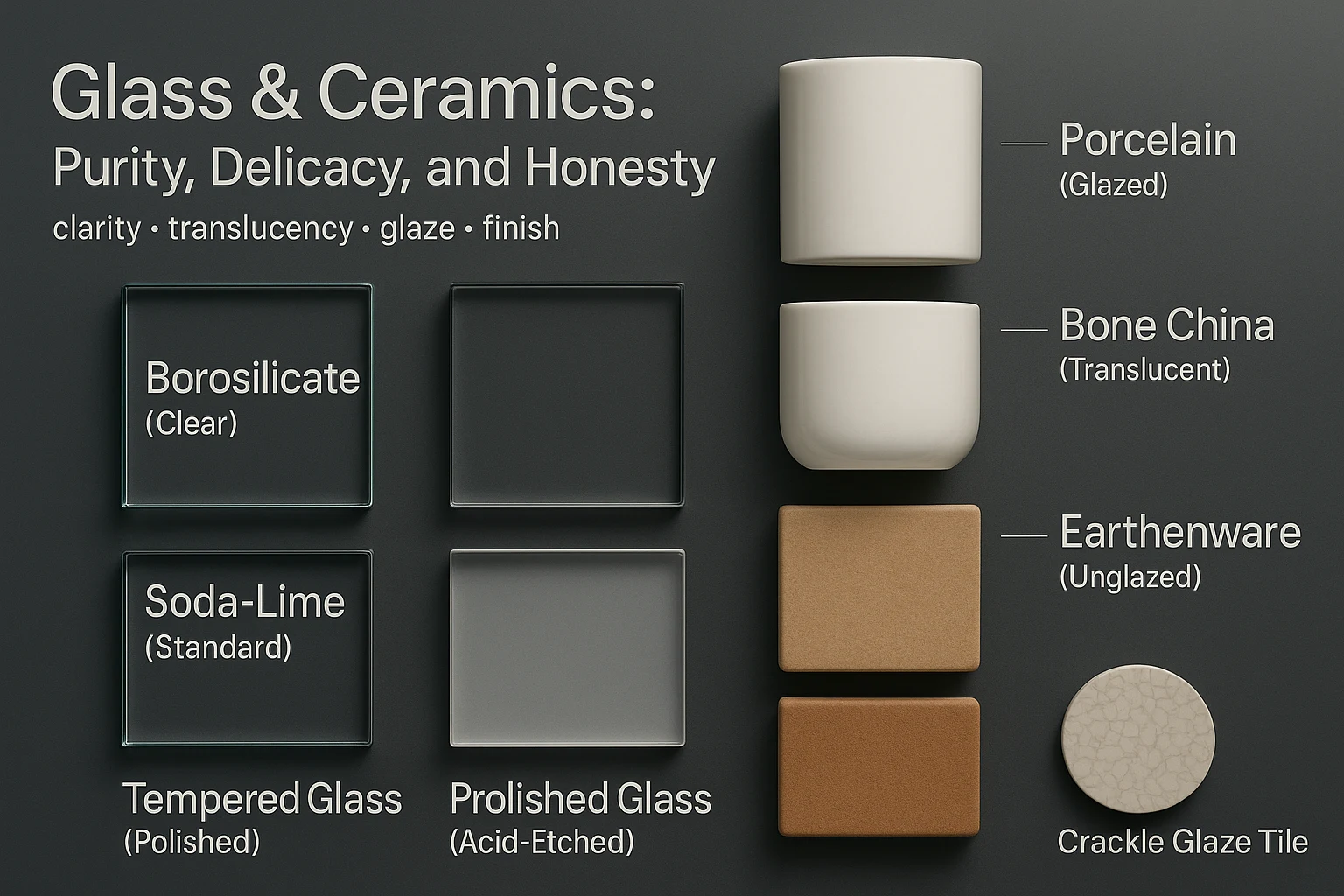 glass & ceramics materials
glass & ceramics materials
 Key Examples: Toughened Glass (technical precision), Frosted/Etched Glass (soft diffusion), Porcelain (delicate luxury), Stoneware (earthy and rustic).
Key Examples: Toughened Glass (technical precision), Frosted/Etched Glass (soft diffusion), Porcelain (delicate luxury), Stoneware (earthy and rustic). A Designer's Insight: Use these materials to play with transparency and translucency. A frosted glass diffuser doesn't just hide a light source; it transforms it into a soft, calming glow. That is a CMF decision that directly impacts the user's experience of light itself.
A Designer's Insight: Use these materials to play with transparency and translucency. A frosted glass diffuser doesn't just hide a light source; it transforms it into a soft, calming glow. That is a CMF decision that directly impacts the user's experience of light itself.
5. Textiles & Leathers: Comfort, Humanity, and Luxury
These are the "soft goods," the materials that are meant to directly interact with our bodies. This category is all about touch, comfort, and the human element.
 Key Examples: Natural Fibers (Wool for warmth, Cotton for softness, Linen for its crisp texture), Synthetics (for performance and durability), and the growing world of innovative Leather Alternatives (like Mycelium from mushrooms or Piñatex from pineapple leaves).
Key Examples: Natural Fibers (Wool for warmth, Cotton for softness, Linen for its crisp texture), Synthetics (for performance and durability), and the growing world of innovative Leather Alternatives (like Mycelium from mushrooms or Piñatex from pineapple leaves). A Designer's Insight: The narrative of sustainability is a huge driver here. Choosing an innovative, plant-based leather alternative is a powerful statement for a modern luxury brand. The material itself becomes a core part of the marketing story.
A Designer's Insight: The narrative of sustainability is a huge driver here. Choosing an innovative, plant-based leather alternative is a powerful statement for a modern luxury brand. The material itself becomes a core part of the marketing story.
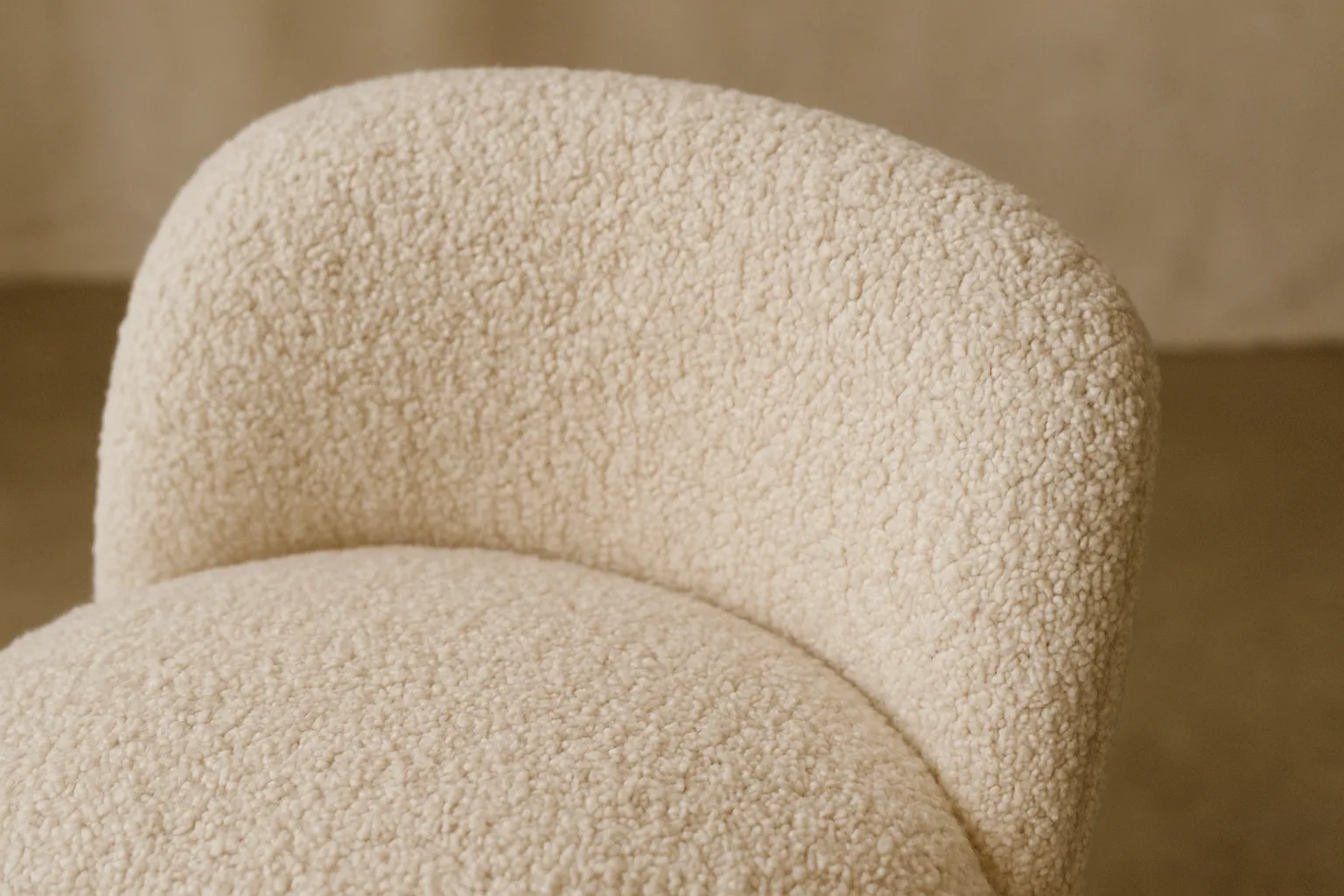 textured fabric
textured fabric
6. Composites & Advanced Materials: High-Performance Storytelling
Composites are engineered materials, born from combining two or more a-symmetric product ents to create something with superior properties. They are the materials of the future and high performance.
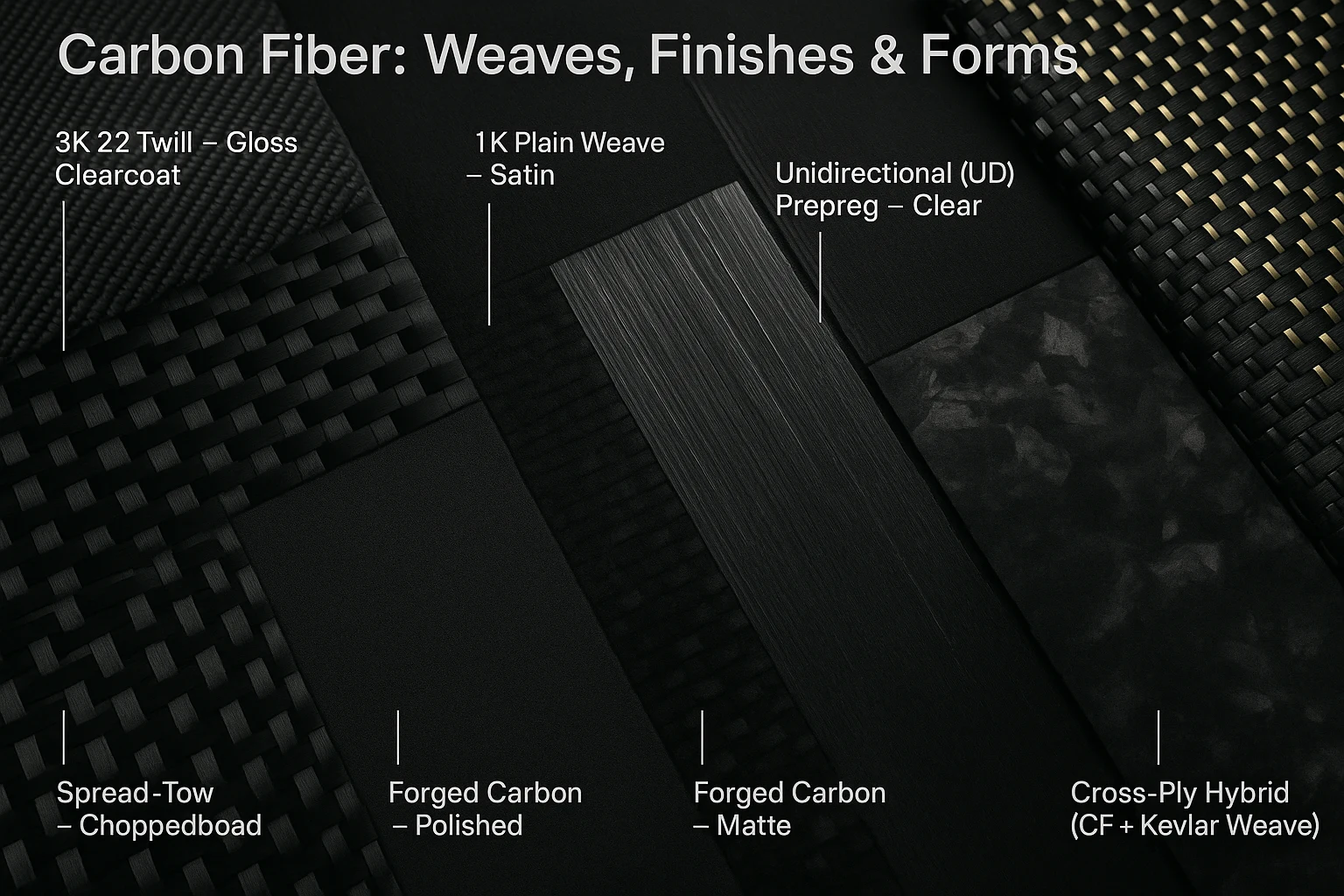 Comparison of Carbon Fiber Material Types
Comparison of Carbon Fiber Material Types
 Key Examples: Carbon Fiber (impossibly light and strong), Fiberglass, and a growing world of a-symmetric recycled composites.
Key Examples: Carbon Fiber (impossibly light and strong), Fiberglass, and a growing world of a-symmetric recycled composites. A Designer's Insight: The aesthetic of a composite often is its story. The iconic woven pattern of carbon fiber isn't just a look; it's a direct visual communication of its high-strength, low-weight properties.
A Designer's Insight: The aesthetic of a composite often is its story. The iconic woven pattern of carbon fiber isn't just a look; it's a direct visual communication of its high-strength, low-weight properties.
7. Natural Stone & Bio-Materials: Raw, Earthy, and Innovative
This category celebrates the beauty of unprocessed, natural materials and the innovation of rapidly renewable resources.
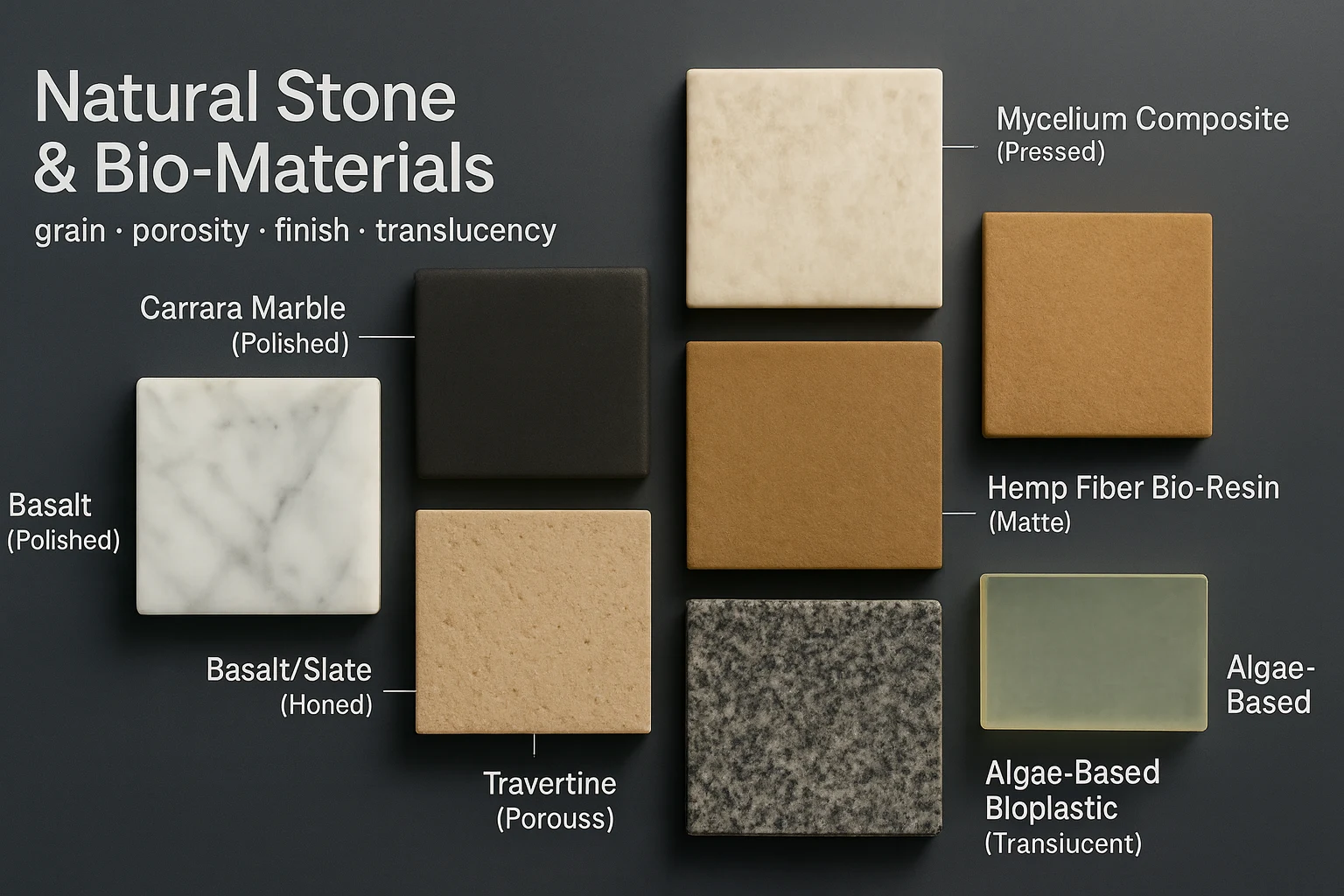 Natural Stone & Bio Materials
Natural Stone & Bio Materials
 Key Examples: Marble & Travertine (for their unique, luxurious veining), and a-symmetric bio-materials like Cork and Bamboo.
Key Examples: Marble & Travertine (for their unique, luxurious veining), and a-symmetric bio-materials like Cork and Bamboo. A Designer's Insight: The key here is authenticity. The "imperfection" of a marble vein is what makes it beautiful and unique. The sustainability story of a fast-growing resource like bamboo is its most powerful feature. Don't hide these characteristics; celebrate them.
A Designer's Insight: The key here is authenticity. The "imperfection" of a marble vein is what makes it beautiful and unique. The sustainability story of a fast-growing resource like bamboo is its most powerful feature. Don't hide these characteristics; celebrate them.
From Theory to Practice: Bringing Your Materials to Life Digitally
Understanding the difference between brushed aluminum and bead-blasted aluminum is one thing. Seeing how their unique reflections will interact with light on your product's specific, curved surface is another challenge entirely. For decades, this was the great, expensive gap in the design process, a gap filled with costly physical prototypes.
Today, that gap is closed by digital tools. The modern workflow is to create a "digital twin," a perfect virtual replica of your product, where you can test, iterate, and perfect your CMF decisions with photorealistic certainty.
The CMF Designer's Virtual Material Lab
This is where Realishot transforms from a simple renderer into an indispensable CMF design studio. It's the perfect, risk-free sandbox for a designer to experiment and become fluent in the language of materials.
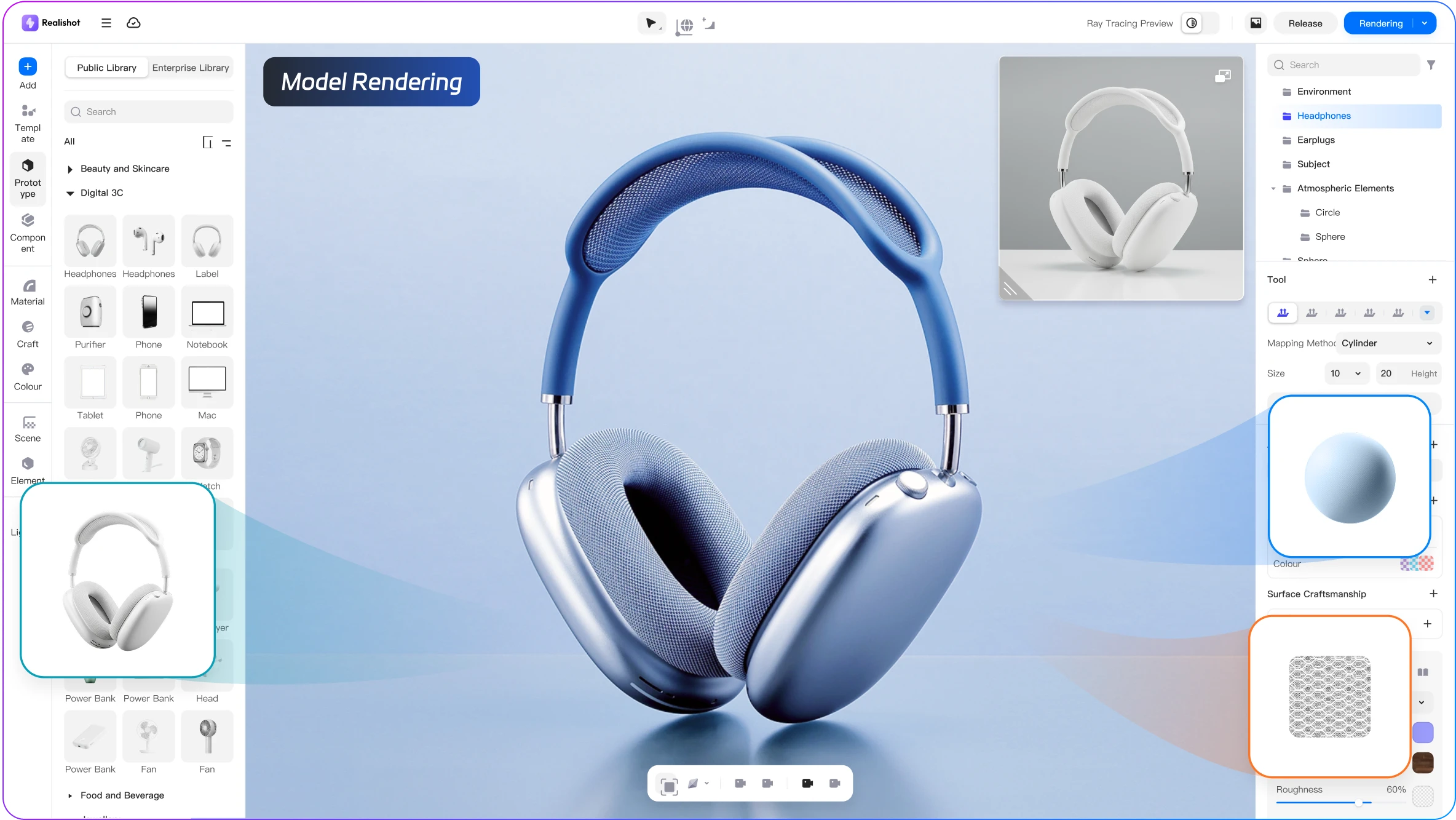 Realishot CMF Design Studio
Realishot CMF Design Studio
 Physically-Based Accuracy: Realishot’s rendering engine doesn’t just "fake it." It simulates the real physics of light. That means you can trust that the digital material on your screen will look and behave like its real-world counterpart.
Physically-Based Accuracy: Realishot’s rendering engine doesn’t just "fake it." It simulates the real physics of light. That means you can trust that the digital material on your screen will look and behave like its real-world counterpart. An Infinite Library at Your Fingertips: You can experiment with hundreds of materials from our extensive CMF library in seconds. For ultimate control, you can even upload your own custom PBR material sets and build a private, proprietary material library for your brand.
An Infinite Library at Your Fingertips: You can experiment with hundreds of materials from our extensive CMF library in seconds. For ultimate control, you can even upload your own custom PBR material sets and build a private, proprietary material library for your brand. The Power of Comparison: Instantly create side-by-side product variations to make confident, data-driven decisions about which material and finish combination tells the best brand story. The ability to rapidly visualize and iterate is a core part of the modern workflow we explore in our guide on What is CMF Design?.
The Power of Comparison: Instantly create side-by-side product variations to make confident, data-driven decisions about which material and finish combination tells the best brand story. The ability to rapidly visualize and iterate is a core part of the modern workflow we explore in our guide on What is CMF Design?.
Conclusion: Stop Naming Materials, Start Speaking Their Language
The best designers in the world don’t just choose materials from a list; they understand them. They know the story a material tells, the emotion it evokes, and the promise it makes to the user on a subconscious level.
Learning the seven core categories is the first step. But true fluency—the kind that builds iconic brands and unforgettable products—comes from practice. It comes from the hands-on experience of applying, comparing, and seeing these materials in a realistic context.
Modern digital tools like Realishot have democratized this practice, giving every designer a virtual, infinite library of the world's materials to experiment with. The barrier to mastering this silent, powerful language has never been lower. It's time to start speaking it.
